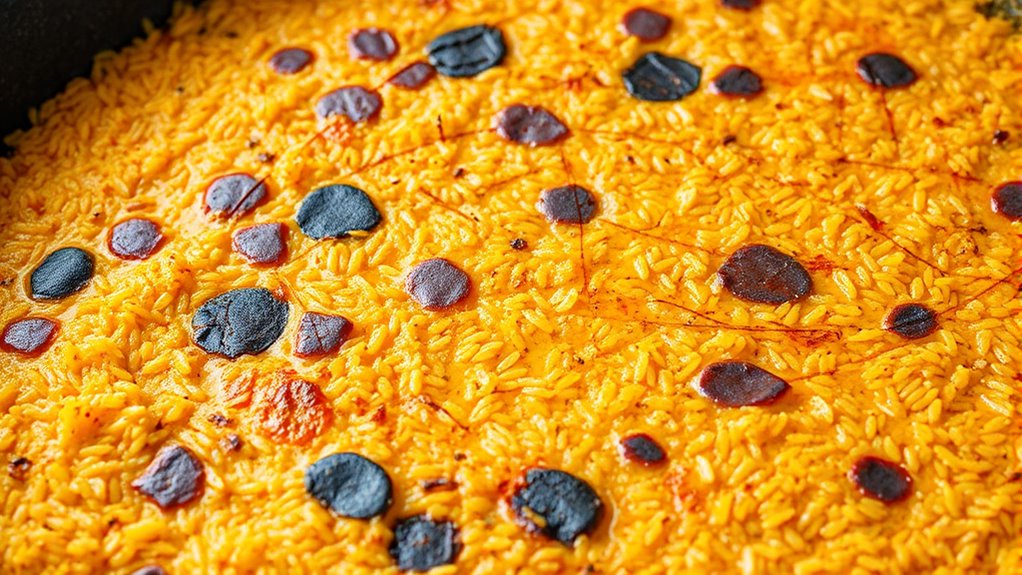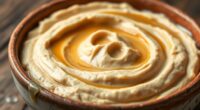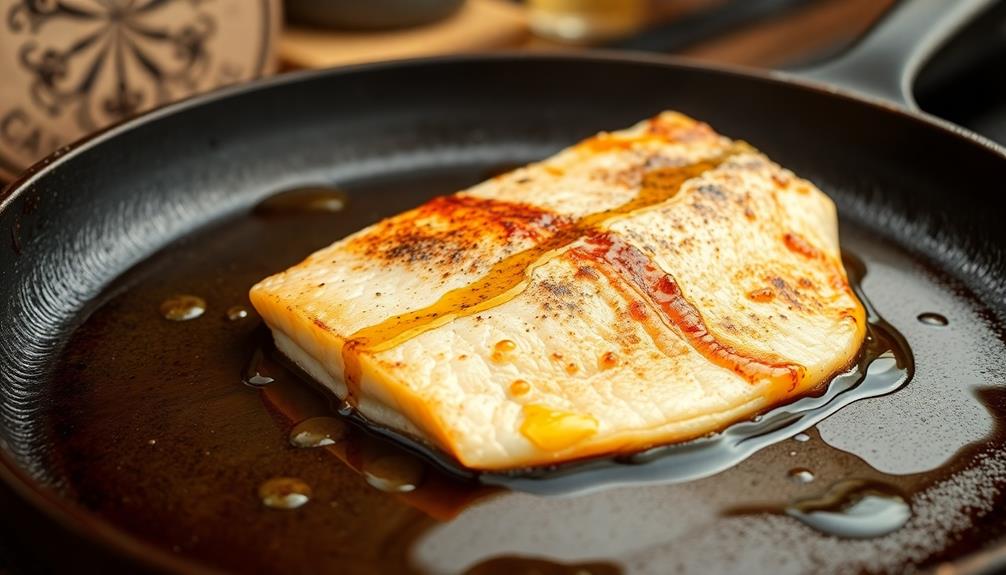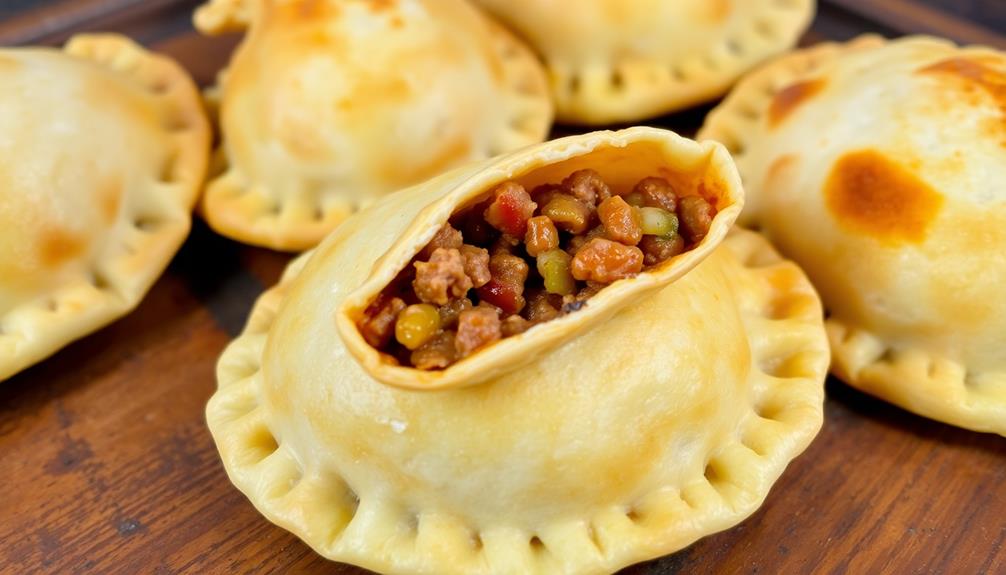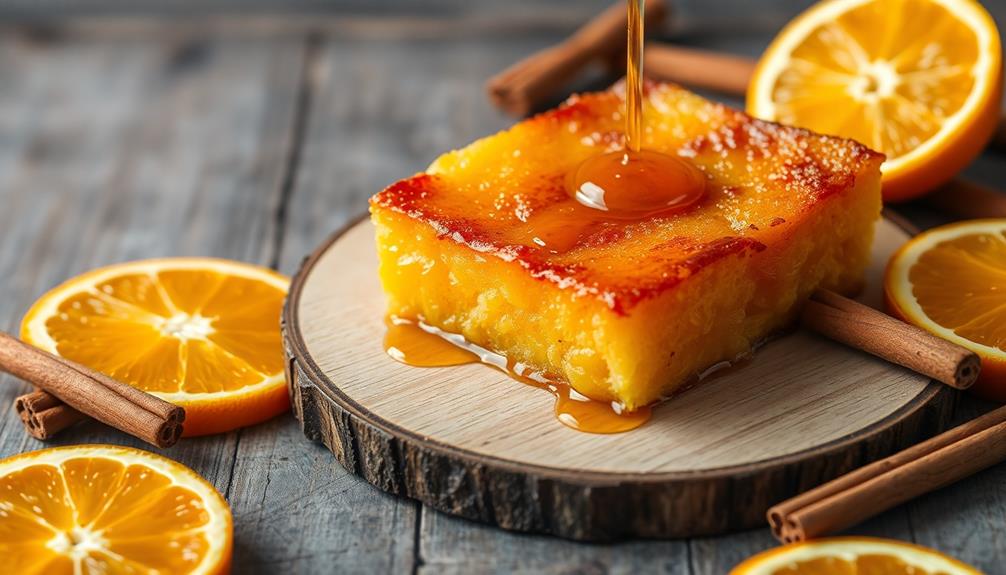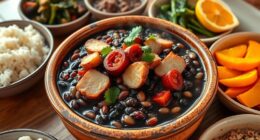Your paella pan’s surface area plays a key role in controlling heat distribution, which directly impacts the socarrat— that crispy, toasted layer you want. A wider, shallower pan spreads heat evenly across the rice, helping it cook uniformly and develop that perfect crust. If you use the right shape, you’ll notice better flavor absorption and consistent texture. Keep exploring, and you’ll discover how choosing the right pan geometry makes all the difference in your paella.
Key Takeaways
- A larger surface area allows more even heat distribution, essential for forming a consistent socarrat layer.
- Wide, shallow pans facilitate better heat conduction across the rice, promoting uniform caramelization.
- Increased surface area exposes more rice to direct heat, enhancing crust development without burning.
- Proper pan geometry ensures heat reaches all rice grains evenly, preventing undercooked spots and uneven socarrat.
- Optimized surface area helps control temperature, allowing precise formation of the crispy, toasted layer characteristic of authentic paella.

A well-designed paella pan isn’t just about looks; its geometry plays an essential role in cooking the perfect dish. The shape and size directly influence how rice distributes across the surface and how heat conducts through the pan. When you choose a pan with the right dimensions, you guarantee that every grain of rice gets the attention it needs to develop that coveted socarrat—the crispy, toasted layer at the bottom. This layer isn’t just flavor; it’s a sign of proper heat control and distribution, both of which are governed by the pan’s geometry. Using a properly sized pan helps ensure that the rice cooks evenly and achieves the ideal texture. The surface area of your pan is critical because it determines how much rice you can cook evenly. A wider, shallow pan spreads the rice thinly, allowing heat to reach every part uniformly. This uniform heat conduction means your rice will cook at the same rate, preventing undercooked or burnt spots. When heat distributes evenly, the rice absorbs flavors better, and the socarrat forms consistently across the surface. Additionally, understanding the heat conduction properties of different pan geometries can help you select the best pan for consistent results. Conversely, a tall, narrow pan traps heat differently, making it harder to achieve that even cooking and the perfect socarrat. The geometry influences how heat flows from the heat source through the pan, affecting the overall texture and taste.
Pay attention to the pan’s diameter relative to its depth. A large, shallow pan offers a broad surface area, which enhances rice distribution. This setup ensures that the heat conduction is efficient, allowing the rice to cook evenly and develop the characteristic crispy bottom. If your pan is too deep or narrow, heat may not spread as effectively, risking uneven cooking and a less desirable socarrat. When you understand how the surface area impacts heat conduction, you can better control the cooking process, adjusting your stove’s heat to promote even caramelization at the bottom without burning.
Additionally, the geometry impacts how you stir and manage the rice during cooking. A wide pan makes it easier to distribute heat and stir the rice without disturbing the delicate socarrat formation. When heat conduction is optimized through proper geometry, you can maintain a consistent temperature across the surface, making it easier to develop that perfect crust. Paying attention to these details allows you to master the art of paella, turning simple ingredients into a dish with complex textures and flavors. In the end, understanding how surface area and heat conduction are shaped by pan geometry empowers you to control every aspect of the cooking process, ensuring that your paella turns out deliciously authentic every time.
Frequently Asked Questions
How Does Pan Material Affect Socarrat Development?
The pan material impacts socarrat development by influencing heat retention and transfer. If you choose a material with good heat retention, like carbon steel, it heats evenly and maintains high temperatures, helping form a crispy, flavorful crust. Conversely, thinner or insulative materials heat unevenly, making it harder to develop that perfect socarrat. So, selecting the right pan material guarantees consistent heat and improves your chances of achieving that authentic, delicious crust.
Can Irregular Pan Shapes Improve Paella Cooking?
Perfectly peculiar pan shapes can indeed improve paella cooking. They promote more even heat distribution and allow you to customize your culinary aesthetics. Irregular shapes increase surface area, encouraging a better socarrat, the crispy crust that’s the soul of the dish. So, by choosing unique, unconventional pans, you can elevate your paella, enhancing both its flavor and visual appeal, creating a culinary experience that’s as artistic as it is delicious.
What’s the Ideal Pan Size for Different Serving Amounts?
When choosing a pan size, consider your serving size and pan diameter. For small groups, opt for a 12-inch pan to serve 2-4 people. If you’re cooking for 6-8, a 15-inch pan works better. Larger gatherings need a 16-18 inch pan for even cooking and a good socarrat. Adjust your pan size to guarantee ideal surface area, which influences crust quality and heat distribution.
How Does Pan Thickness Influence Heat Distribution?
Imagine a thick paella pan; its thermal mass absorbs heat more slowly, leading to even heat distribution through heat conduction. Thicker pans provide greater thermal mass, which stabilizes temperature and prevents hot spots. Conversely, a thinner pan heats quickly but can create uneven heat, risking burnt socarrat. So, your pan’s thickness directly influences how well heat distributes, impacting the perfect crust and overall cooking consistency.
Are There Specific Pan Designs for Seafood vs. Meat Paellas?
You might choose specific pan designs for seafood or meat paellas based on aesthetics and traditional shapes. Seafood paellas often use shallow, wide pans to promote even cooking and a good socarrat, while meat versions may benefit from deeper pans for longer simmering. Traditional pan shapes enhance authenticity and presentation, and selecting the right design helps control surface area, ensuring your dish develops the perfect crust and texture.
Conclusion
As you lift the paella pan, imagine the shimmering surface basking under the warm glow of the flame. The intricate dance of surface area guides the delicate crust of socarrat, like a painter’s brushstroke shaping a masterpiece. Embrace the geometry beneath your fingertips, for it’s the silent architect of flavor and texture. With each stir and sizzle, you craft not just a dish, but a symphony of tradition and precision that lingers long after the last bite.
